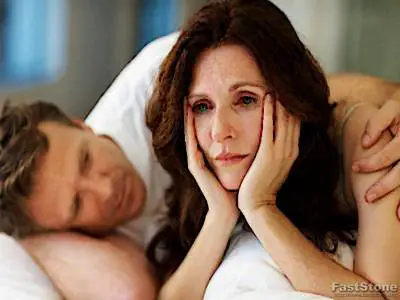EVERYTHING YOU NEED TO KNOW ABOUT MENOPAUSE

Menopause is a phase when you stop getting your period. It marks the end of your menstrual cycles. You stop getting your period for at least six months or one year and confirm with your gynecologist. Woman between 40s to 50s is the age of getting menopause, but in the United States, the average age is 51 years old.
Which Types of Menopause You Could Get?
- Normal or Natural menopause: occurring between the age of 40 and 55 with an average of 50 years
- Premature menopause: Period stop before you hit 40. About 1% of women have menopause below the age of 40
- Delayed menopause: you still have your period until the age of 55
- Artificial menopause: caused by surgical removal of both ovaries or destruction of ovaries by exposure to irradiation
How Menopause Started?
Maybe preceded by the infrequent period, scanty or decrease the amount of your usual period (less than 30ml). Or the length of your period becomes less to two days. A period of dysfunctional uterine bleeding or suddenly your period stop and never return. About 10% of women suddenly their period stop.
What Changes Happen To You During Menopause?
General Changes:
- Your breast might become smaller due to tissue in your breast atrophied or larger due to increase fat deposition
- Your appetite may be decreased or increase which leading to obesity. Constipation and gases accumulate (Fart! Fart! Fart!)
- The tendency to develop menstrual hypertension as the amount of estrogen decrease. Oestrogen can protect you from atherosclerosis
- You gradually have a high risk of coronary heart disease because the level of cholesterol and triglycerides is increased
- Liability to osteoporosis (bone disease which resulted in bone become weak easy to break)
- Mild hirsutism (increase amount of hair in the manly pattern, e.g., in an area where men typically grow hair)
- Psychological changes for examples headaches, irritability and depression
Local Changes:
- The pubic hair becomes scanty, grey or white
- The vagina becomes narrow, and the pH becomes neutral or alkaline. This condition will predispose to infection
- The uterus becomes small and atrophic. Senile endometritis may occur (inflammation of uterus)
- The ovaries become small, fibrotic (excess fibrous of connective tissue) and containing no follicles (no egg)
- Bladder becomes small. The condition may lead to going to the bathroom a lot (you pee a lot), inflammation of your bladder and urethra
Symptoms You Might Get With Menopause
Palpitation, hot flushes (sensation of heat felt in the chest, neck, face, head or spread to all over body) and night sweats. About 75% of postmenopausal women have hot flushes. Usually, hot flushes disappear after one or two years even without treatment from a doctor.
The hot flush lasts for seconds, minutes, and rarely for one hour but usually 3 minutes. One or two in 24 hours to one every 15-30 minutes in a day.
However, about 25% of cases will continue to have hot flushes for more than five years.
Lack of concentration, poor memory and insomnia (difficult in sleeping/staying asleep). Insomnia is usually the result of night sweats
Joint pain and backache due to loose ligament and muscle become weak
What Can You Do With Menopause?
Well, menopause is a change in life and not the end of life. You can avoid factors which can cause hot flushes as hot weather, hot bath, nervousness, excessive intake of coffee or tea, excessive blanket and covering during sleep.
Control of diet with less fat to avoid obesity. Increase intake of calcium, i.e., dairy product, green leafy vegetables, nuts or fish where you eat the bones-sardine and pilchards.
However!
There are some treatment or therapy to help you in menopause.
Treatment for symptoms such as depression and palpitation
Estrogen therapy: for a woman without a uterus
Given to women if the symptoms such as hot flushes, senile vaginitis (inflammation of vagina), increase the frequency of peeing and psychological disturbances. Treatment is given for at least one year to prevent recurrence of symptoms
This therapy also is given to premature menopause as this condition predisposes to osteoporosis (bone break easily). Treatment is given at least until the age of 50 years. The treatment reduces the risk of osteoporosis by 50% to 60%
Combined estrogen-progesterone therapy: for a woman with a uterus
To protect against endometrial hyperplasia (womb cancer).
Progesterone alone is given to control hot flushes. Although progesterone less effective than estrogen but it causes a less side effect.
Menopause happens to every woman on earth. It differs in every woman of how it started, the changes in your body, the symptom might present in you and the suitable treatment you can do. Consult your gynecologist for explanation and reassurance of the changes in your life.
Medically reviewed by Dr. Nida Hayat Khan
Editor @ BioScience.pk
- Comment
- Posted by Nur Artiqah Noor Zohori